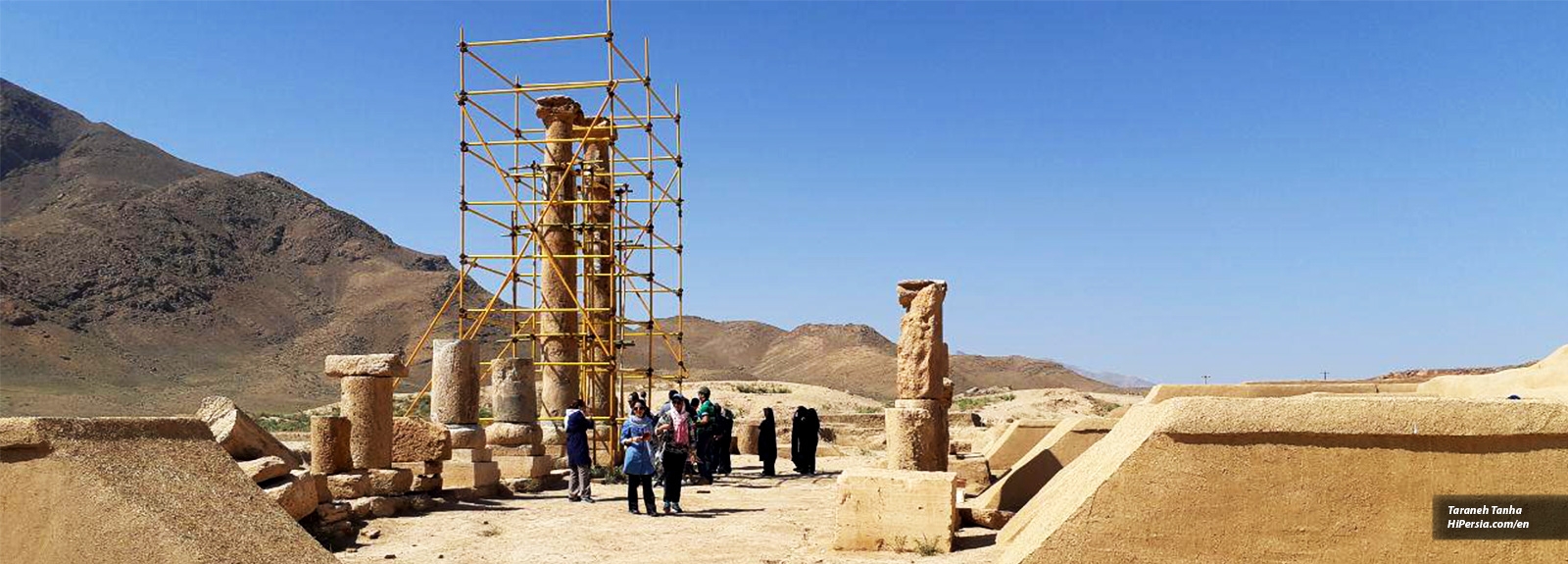



The historical site of Khorheh is one of the great monuments of ancient Iran, which remained the Parthian period. Khorheh temple is located in the northeastern district of Mahallat, Khorheh village.
The historic and ancient site of Khorheh is adjacent to Khorheh village, 48 km northeast of Mahallat city in the Markazi province. Khorheh temple is currently very damaged, and only 2 of its large pillars remain. Archaeological research on the building reveals that the building was a private palace built in the first century AD and remained until the end of the Parthian period. Archaeologists have discovered works and pottery in the area that belong to the Islamic period. Research in the historical area of Khorheh and the discovery of bones there showed that this ancient site was converted to a cemetery in the Ilkhanid period.

The word Khorheh in the Avesta means the location of the rising sun. Khor also used in the green and yaylak areas in this ancient source. So, according to the meaning of the word, it is likely that one of these two meanings is the naming purpose of this place.
This historic place was used in two ancient and Islamic periods of Iran. The historic site of Khorheh has an area of 3000 square meters. The Khorheh has a palace building consisting of internal parts, various rooms, and an exterior courtyard. At present, two complete pillars, the remains of the collapsing columns, part of the stone walls, graves, and works of this region have remained. These two pillars consist of six pieces of stone with a height of 8 meters. The architectural style used in pillars and piers can be seen in the common Persian and Bactria (it was a historical Iranian region in Central Asia) architectural style.
In the stability of the pillars, like the Achaemenid architecture, no mortar has been used. The pillars have two cubes. The stalk of the columns has no grooves and have imperfect conic shapes. Also, these pillars narrow from bottom to top. Capitals have rounded spiral grooves.

In the Khorheh Palace, there are two sections of the interior and exterior with two completely separate entrances, which are great points of the Parthian period architecture. The external part of the building belongs to the head of the family, who uses it to meet and deal with specific people, and the internal section of the building is dedicated to the family members of the master. There were two rooms, one of which was a kitchen and the other was a storage room. Inside the Andaruni (It was the interior section of the wealthy houses in Iran, especially for women and children, and servants).

This Parthian monument also used during the Sassanid era. Also, part of it has changed in the Sassanid period. It was used for industrial purposes during this period. The excavations on the historic site of Khorheh show that the remained palace in this area is a combination of three related buildings of different periods.
This city has a cool summer and a cold winter (though not very cold). The hottest month of the Mahallat is August, and the coldest month is January. The best time to travel to the Mahallat is spring and summer.
From Mahallat to Khorheh Temple, it is about 50 km distance, and you can reach 45 minutes by car. The shortest way to get to the Khorheh is Khomein-Mahallat Rd.






“Oh! Squander not this breath that Heaven hath lent thee, Nor make too sure another breath to borrow!’” Khayam